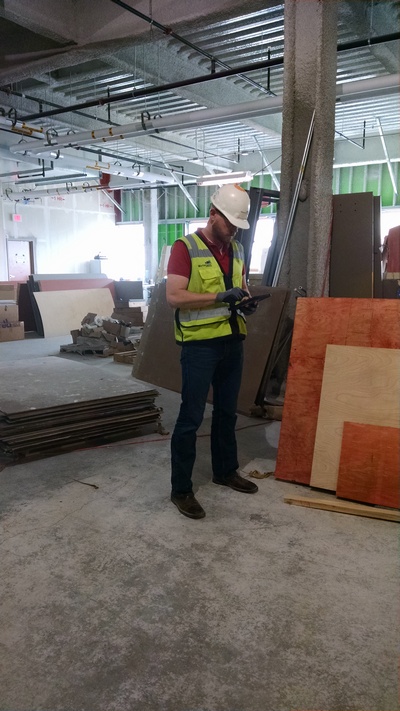Grooming the next generation, embracing ‘smart’ tools and technology
By Justin Blubaugh
 The strong demand for quality superintendents is greater than it has ever been with companies and headhunters, alike, recruiting top talent. Contractors need to be diligent in retaining their current superintendents and explore ways to bring on new superintendents and train current talent into superintendent roles.
The strong demand for quality superintendents is greater than it has ever been with companies and headhunters, alike, recruiting top talent. Contractors need to be diligent in retaining their current superintendents and explore ways to bring on new superintendents and train current talent into superintendent roles.
According to the AGC of America’s 2015 Worker Shortage Survey Analysis, out of 1,400 survey respondents, 86 percent of firms report having trouble filling available positions, up from 83 percent in 2014 and 81 percent in 2013. The main reasons for these shortages include an aging workforce, laid off construction workers who left the industry for other careers and a lack of quality training programs, particularly for hourly craft professionals.
Although the survey is a snapshot of the industry as a whole, it reflects a similar challenge of finding quality individuals to fill the role of superintendent.
While most younger superintendents possess college degrees, many older superintendents have come up through the trades. Educational background doesn’t necessarily need to be obtained with a four-year degree; technical schools and apprenticeships also provide paths to the superintendent role. Larger general contractors and construction managers usually have defined paths through exposure as field and project engineers.
For many subcontractors, high-performing team members are asked to take on foreman responsibilities leading one crew and then multiple crews. If successful, they are moved into a superintendent role where they would manage multiple crews on multiple jobs.
Most importantly, firms need to recognize and challenge team members who excel. Professional and organizational growth occurs when team member strengths are utilized, challenges are overcome and an innovative culture is embraced.
It’s also important to embrace today’s tools while prepping the next generation to take the helm. In other words: leading by example.
Over the last decade, the role of a superintendent has transitioned from an individual with a set of plans under their arm to one with an iPad equipped with tools that allow them to build more efficiently. While the fundamental traits of a superintendent remain similar, superintendents in the field are required to embrace the use of technology. Long gone are the days of solely using pen, paper and clipboard—the use of technology, whether on an iPad, computer or smartphone, is the wave of the future.
There are a number of tools available that help improve workflow and add value to the building process. Technology can be used to complete inspections, log daily activities, direct subcontractor installation, plan work and communicate to owners.
Bluebeam is one of the most beneficial tools as it allows for PDF creation, markup, editing and real-time collaboration. Drawings can be marked up to clearly show disruption avoidance plans, site logistic layouts, phase planning, trade flow and sequencing in work areas to better communicate the schedule. These plans can then be communicated back to the team and owner in a visual form.
BIM 360 is a construction management software that enables almost anytime, anywhere access to project data throughout the building construction lifecycle. BIM 360 can be used to complete jobsite inspections, log issues, track punchlist items and manage events that occur on a project. BIM 360 Glue is a tool that allows for multi-disciplinary collaboration and coordination of the project’s BIM model. With BIM 360 Glue on an iPad, you can view the real-time model to direct subcontractor layout and ensure building systems are installed correctly. Superintendents rely on the model in conjunction with the plans because this technology allows them to see a real-time, virtual 3-D model of the project.
NoteVault recently launched One Team. One Report. Superintendents can invite subcontractors to contribute project documentation to any project within their account at no cost to either the contractor or the subcontractor. It features a daily reporting platform; Notes! app for Android or iOS; activities labor, materials and equipment app; immediate notification of incidents/accidents; collaboration with colleagues using comment feature and professional human transcription.
In addition, Elecosoft just introduced the latest version of Asta Powerproject BIM, which brings new improvements in 4-D planning to help customers improve efficiency and win more business. This third iteration of the BIM product also boasts enriched cost-estimation capabilities – working more closely with cost-estimation systems to enable contractors to build a 5-D integrated project view.
Depending on the project management program used, there is most likely an app that can be downloaded to streamline data input, look at drawings, track costs/issues and document information.
Embracing the technology and tools at a superintendent’s fingertips will enable him or her to build smarter, quicker and safer. These tools, combined with good planning, communication and leadership skills, are the foundation for success.
Justin Blubaugh, a superintendent for Mortenson Construction with 12 years of industry experience, has worked on projects throughout the country ranging from under $1 million to over $200 million. Prior to joining Mortenson, Blubaugh served in the Army Reserve for 10 years.
Reference: https://www.agc.org/sites/default/files/Files/Communications/2015_Worker_Shortage_Survey_Analysis.pdf.



 Join our thriving community of 70,000+ superintendents and trade professionals on LinkedIn!
Join our thriving community of 70,000+ superintendents and trade professionals on LinkedIn! Search our job board for your next opportunity, or post an opening within your company.
Search our job board for your next opportunity, or post an opening within your company. Subscribe to our monthly
Construction Superintendent eNewsletter and stay current.
Subscribe to our monthly
Construction Superintendent eNewsletter and stay current.